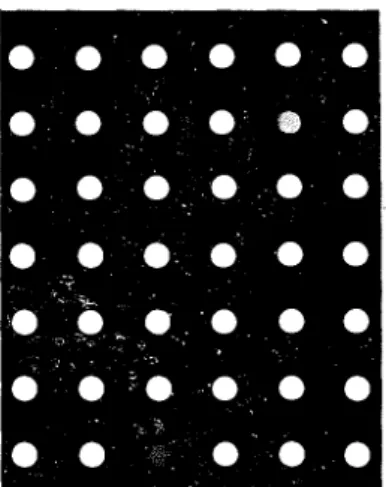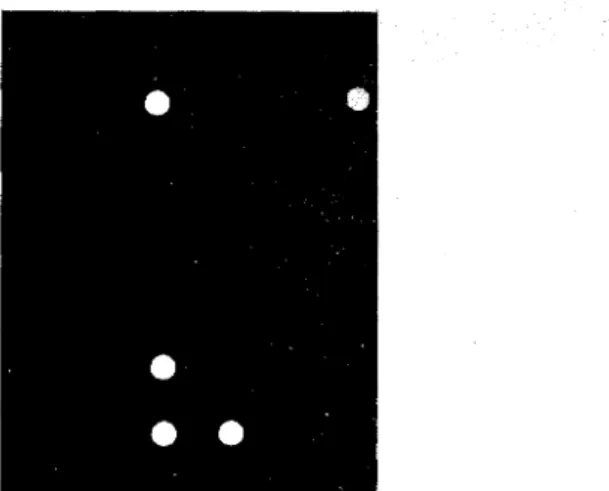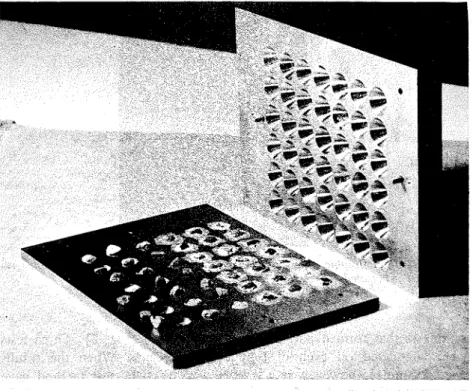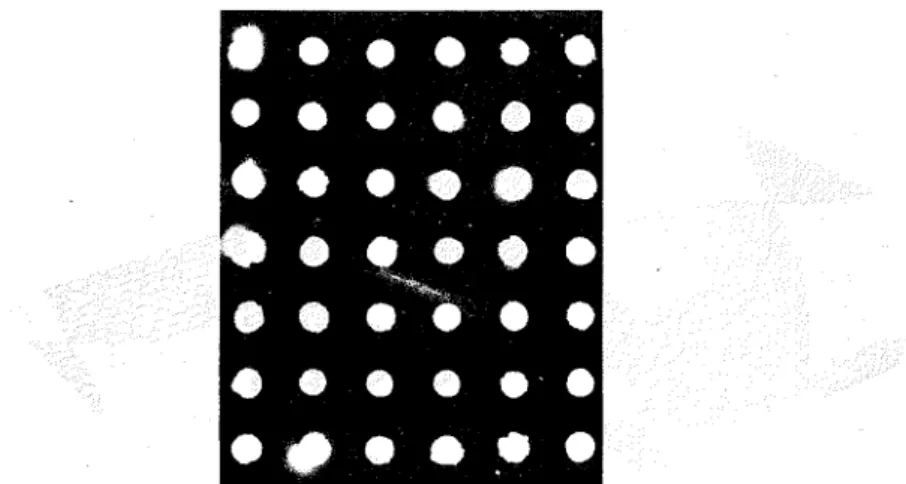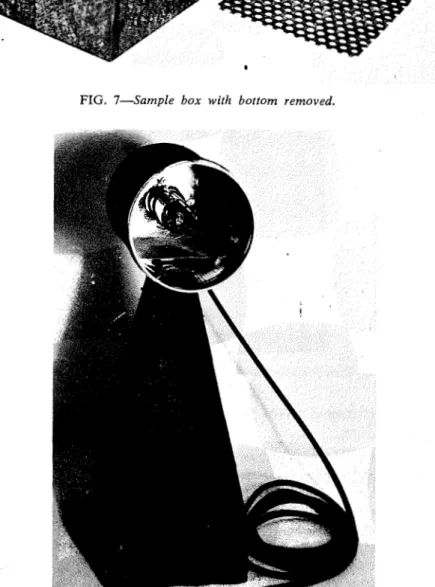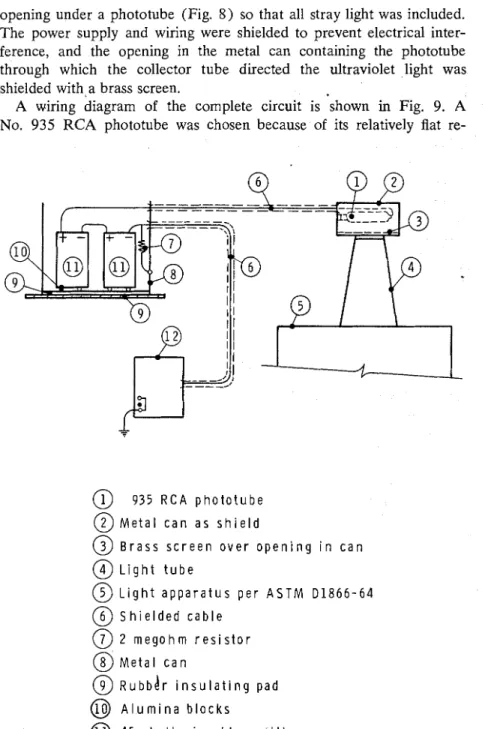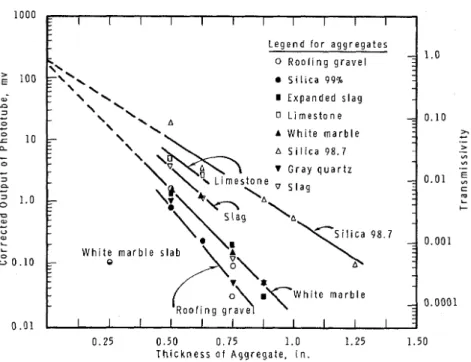Publisher’s version / Version de l'éditeur:
Journal of Materials, 3, 2, pp. 455-465, 1968-09-01
READ THESE TERMS AND CONDITIONS CAREFULLY BEFORE USING THIS WEBSITE. https://nrc-publications.canada.ca/eng/copyright
Vous avez des questions? Nous pouvons vous aider. Pour communiquer directement avec un auteur, consultez la première page de la revue dans laquelle son article a été publié afin de trouver ses coordonnées. Si vous n’arrivez pas à les repérer, communiquez avec nous à PublicationsArchive-ArchivesPublications@nrc-cnrc.gc.ca.
Questions? Contact the NRC Publications Archive team at
PublicationsArchive-ArchivesPublications@nrc-cnrc.gc.ca. If you wish to email the authors directly, please see the first page of the publication for their contact information.
NRC Publications Archive
Archives des publications du CNRC
This publication could be one of several versions: author’s original, accepted manuscript or the publisher’s version. / La version de cette publication peut être l’une des suivantes : la version prépublication de l’auteur, la version acceptée du manuscrit ou la version de l’éditeur.
Access and use of this website and the material on it are subject to the Terms and Conditions set forth at
Translucency of mineral aggregrates for built-up roofs
Tibbetts, D. C.; Robson, D. R.
https://publications-cnrc.canada.ca/fra/droits
L’accès à ce site Web et l’utilisation de son contenu sont assujettis aux conditions présentées dans le site LISEZ CES CONDITIONS ATTENTIVEMENT AVANT D’UTILISER CE SITE WEB.
NRC Publications Record / Notice d'Archives des publications de CNRC:
https://nrc-publications.canada.ca/eng/view/object/?id=b560a680-c5e5-4a71-a7b2-88575937c561 https://publications-cnrc.canada.ca/fra/voir/objet/?id=b560a680-c5e5-4a71-a7b2-88575937c561Authorized Reprint from the Copyrighted Journal of Materials, Vol. 3, No. 2
Published by the
American Society for Testing and Materials 1968
D. C . Tibbetts' and D. R. Robson1
Translucency of Mineral Aggregates for
Built-Up Roofs
REFERENCE: Tibbetts, D. C. and Robson, D. R., "Translucency of Mineral Aggregates for Built-Up Roofs," Journal of Materials, JMLSA, Vol. 3, No. 2, June 1968, pp. 455-465.
ABSTRACT: The investigation involved the application of ASTM Method D 1866-64 by subjecting individual pieces of aggregate to an ultraviolet light source. Using the same light source and the same method of photographic interpretation but using graded aggregate lay- ers, it was noted that unreasonable layer thicknesses would be required to prevent penetration of light through void spaces. The method was further modified by replacing the photographic interpretation with a phototube to obtain a quantitative measure of transmitted light. Aggre- gate types and thicknesses influenced phototube current and consequent voltage drops were measured by a sensitive voltmeter. Results show that only a small amount of ultraviolet light is transmitted through thi-knesses n ~ c m a l l y used in roofing application with an approximate 0.03-per cent difference between white marble and gravel. Results suggest that the advantage of white aggregate in reducing surface tem- perature may outweigh any disadvantages from its translucency.
KEY WORDS: aggregates (roofing), translucence, ultraviolet light, membranes (bituminous), voids, absorption (light), temperature, evalua- tion
The influence of sunlight on roof surface temperatures and the wide seasonal temperature range experienced by bituminous membranes over insulated roof decks in Canada have raised the question of the suitability of light-colored translucent aggregates as protection on bituminous built-up roofs. Color has a definite effect on roof surface temperature, since it influences the absorption of solar energy. The action of the ultraviolet fraction of sunlight on roofing, however, is not clearly under- stood, although it is thought to be largely responsible for the photo- oxidative process of bitumen degradation.
A method for determining the ultraviolet light translucency of corn-
' Officer-in-charge and research officer, respectively, Atlantic Regional Station, Division of Building Research, National Research Council of Canada, Halifax, N.S.
456 JOURNAL OF MATERIALS
monly used roofing aggregates is described in ASTM Test for Translu- cency of Mineral Aggregates for Use on Built-Up Roofs ( D 1866-64). This test was employed by the Atlantic Regional Station of the Division of Building Research in Halifax in examining some of the properties of the aggregates commonly available in that region. Forty-two indi- vidual pieces of aggregate were set with putty into holes in a brass plate and subjected to filtered light from an ultraviolet light source. The ultraviolet light passing through the aggregate samples was allowed to expose a photographic film for 60 min.
Using an apparatus constructed as specified in ASTM Method D 1866-64, conventional roofing gravel, marble, and air-cooled slag were examined. Sufficient quantities were used to permit grading according
FIG. 1-Photographic plate showir~g light trarlsmission ~hrough marble aggregate.
to ASTM Specifications for Mineral Aggregate for Use on Built-Up Roofs ( D 1863-61 T ) . Tests for moisture and hardness were made according to the requirements of ASTM Test for Moisture in Mineral Aggregate for Use on Built-Up Roofs ( D 1864-61 T) and ASTM Test for Hardness of Mineral Aggregate for Use on Built-Up Roofs ( D 1865-61 T ) , and representative pieces were chosen from the graded portion for the translucency tests.
Figures 1 and 2 are exposed photographic plates representing light transmission through aggregate samples. It is clear from Fig. 1 that all the marble samples permitted light to pass through and exposed the film at the holes in the brass cover plate. The gravels and slags proved to be nontranslucent by this method, except for a few pieces
TIBBETTS A N D ROBSON O N MINERAL AGGREGATES 4 5 7
FIG. 2-Photographic plate showing light transmission through gravel aggre- gate. Light penetrated quartz pieces contained i n satnple.
of quartz that formed part of the gravel sample (Fig. 2 ) . Three tests were conducted on each of four aggregate types. When the results were examined, however, it was concluded that the test method gave no quantitative results of practical use and took no account of the effect of gravel shape and void spaces in layers of aggregate.
Tests with Modified Test Box
A second series of tests was carried out to study the transmission through graded aggregate layers using a modification of the ASTM Method D 1866-64 (Fig. 3 ) . A bakelite plate (456 by 7 in.) was substituted for the brass plate of the ASTM apparatus. The holes in the bakelite were similar in size and location to those for the ASTM brass plate, and metal sides were provided to form a box (Fig. 4 ) . This permitted the use of layers of graded aggregate of various thick- nesses, including those corresponding to the usually specified thicknesses of 400, 350, and 300 pounds per square for gravel, marble, and slag, respectively. Ultraviolet light penetrating the aggregate layer in the box was allowed to expose a photographic film as in the ASTM test. By this method it was hoped that the thickness of aggregate required to stop the passage of ultraviolet light, regardless of translucency, might be determined.
In thicknesses up to 1 in., similar light transmission effects were observed for all the aggregates used, typical results being shown in Figs. 5 and 6. Unreasonable thicknesses, from a weight and cost point of view, would be required for all types to prevent penetration of ultra- violet light through the void spaces.
458 JOURNAL OF MATERIALS
FIG. 3-Perforated brass plate apparatus for ASTM Method D 1866-64, using individual pieces o f aggregate.
TIBBETTS A N D ROBSON O N MINERAL AGGREGATES 459
FIG. 5-Light transmission through %-in. layer of marble aggregate.
FIG. 6-Light transmission through
void spaces in layers of aggreg were made to the test
measure of the ult
of the film used in previous tests, a tapered collector tube was made to direct the ultraviolet light passing through the test sample to an
460 JOURNAL OF MATERIALS
FIG. 7-Sample box with bottom removed.
FIG. 8-Tapered tub€ to direct ultraviolet light passing through sample to an opening under the phototube. Phototube enclosure shows brass screen over opening.
TIBBETTS AND ROBSON ON MINERAL AGGREGATES 461
'opening under a phototube (Fig. 8 ) so that all stray light was included. The power supply and wiring were shielded to prevent electrical inter- ference, and the opening in the metal can containing the phototube through which the collector tube directed the ultraviolet light was shielded with.a brass screen.
A wiring diagram of the complete circuit is shown in Fig. 9. A
No. 935 RCA phototube was chosen because of its relatively flat re-
@
935 R C A p h o t o t u b e @ M e t a l c a n a s s h i e l d@
B r a s s s c r e e n o v e r o p e n i n g i n c a n@
L i g h t t u b e@
L i g h t a p p a r a t u s p e r A S T M D 1 8 6 6 - 6 4@
S h i e l d e d c a b l e@
2 m e g o h m r e s i s t o r@
M e t a l c a n@
~ u b b d r i n s u l a t i n g p a d@
A l u m i n a b l o c k s0
4 5 v b a t t e r i e s ( d r y c e l l )@
M i l l i v o l t m e t e r r a n g e 0 - 1 0 0 0 m v r e a d a b l e t o 0 . 0 5 m vFIG. 9-Schematic diagram of ultraviolet light absorption measurement apparatus.
462 JOURNAL OF MATERIALS
sponse at anode voltages of 90 V; its range of maximum value (0.29 to 0.36 pm) corresponds quite well with the wavelength expected from the sunlamp and blue glass filter combination used in ASTM Method D 1866 (0.35 pm). The phototube is energized by the two 45-V dry-cell batteries; the current is passed through a series resistance of 2 rnegohrns; and the voltage drop across the resistor is measured by a sensitive voltmeter.
The amount of ultraviolet light absorbed is influenced by the type of aggregate and the layer thicknesses. Changes in either result in changes in phototube current and consequently in the voltage drop acioss the 2-megohm resistor. This voltage is read by means of the ecorded for each change ickness or type of
Theoretical Considerations
The intensity of radiation I passing through a uniform material of thickness t is relat nsity of the entering radiation lo by the exponential law
This is commonly known as Lambert's law, and a is called the absorp-
tion coefficient.
Equation 1 can also be converted to the form
in which /3 is commonly referred to as the extinction coefficient. When there is reflection at the surface, the intensity of the entering radiation I , is related to the incident radiation I* by the relation
I0 = I*(1
-
R ). . .
.
(3)where R is the reflectivity of surface. By substitution in E q 2 . . .
I = I*(1
-
R)10-st.. ..
(4)so that
I
T = - I* = ( 1
-
R)10-st.. . . . (5) where T is the transmissivity of the sample.When the described phototube circuit is used to measure the ultra- violet radiation, it is convenient to take the voltage drop across the resistor as a measure of ultraviolet intensity. Thus, when no sample is present the output voltage is proportional to I*, and when a sample is interposed between the lamp and the phototube the output voltage
TIBBETTS A N D ROBSON O N MINERAL AGGREGATES 463
is proportional to I . If it is assumed that the phototube current varies linearly with the ultraviolet intensity, the fraction of the incident radia- tion transmitted through a sample is the ratio of the output voltages with and without a sample.
Equation 4 indicates that log I should be a linear function of the sample thickness t, if the Lambert law is applicable to the type of sample being tested. Furthermore, if the log of the output voltage is a linear function of sample thickness, it indicates that the phototube response is linear as well as that Lambert's law is applicable.
Aggregate Screening
The samples to be tested were graded in accordance with ASTM Specifications D 1863-61 T. It was difficult, however, to obtain a uni- form thickness of aggregate in the sample box, and all samples were further graded to pass a %-in. sieve and be retained on a No. 4 sieve.
Test Procedure
The sunlamp was turned on, and the batteries were connected to the phototube at least 5 min before each test. The first reading ( I t ) was taken on the millivolt meter with the dark slide in place, and the apparatus was assembled so that it shut off all light to the phototube. This reading was recorded. The dark slide was removed, letting the ultraviolet light pass through the perforated bottom of the empty sample box. This reading also was recorded as I*.
A %-in. layer of aggregate was placed in the box, and a meter reading was obtained with the dark slide removed to permit ultra violet light to pass through the sample; this reading was recorded as I . Aggregate was added in successive layers of approximately 1/, in., with meter readings taken at each stage to obtain an I-value for each thick- ness of the material until no difference was recorded between the read- ings taken with the dark slide in ( I , ) and the total thickness of the sample with the dark slide removed ( I ) .
Results
The f tests mad
gate and a l/,-in.-thick slab of white marble are
The values plotted as corrected output of phototube are the actual measured values minus the output with the opaque slide in place. The scale on the right side of the figure gives the value of T directly. Al- though the results show some scatter, they are rep
well by straight lines, so that the Lambert law is sh and the linearity of the phototube output is confirm
The effect of voids can be seen by comparing the values for the marble slab and those for the layers of aggregate. The transmissivity
464 JOURNAL OF MATERIALS
of the l/,-in.-white marble slab is 0.0005 (Fig. 1 0 ) . This means that the percentage of ultraviolet light transmitted is 0.05 per cent. An aggregate layer of the same material would have to be about .7,/, in. thick to achieve the same percentage of ultraviolet light transmission. Note that at layer thicknesses of :%-in. the difference in transmission between white marble and roofing gravel is only about 0.03 per cent. Even between silica and roofing gravel the difference in transmission is less than 1 per cent.
The results show that a small amount of ultraviolet light is trans- mitted through all of the materials tested at normal thicknesses of
I I I I I I I I I I I L e g e n d f o r a g g r e g a t e s
-
.
\\ 0 R o o f i n g g r a v e l ?\' S i l i c a 9 9 % t \'\ \ \ I E x p a n d e d s l a g \'
\'.
A 0 L i m e s t o n e-
\ - \ A W h i t e m a r b l e A S i l i c a 9 8 . 7 T G r a y q u a r t z-
-
W h i t e m a r b l e s l a b - 0 R o o f i n g g r a v e I I I I I I I I I I 1 0 . 2 5 0 . 5 0 0 . 7 5 1.0 1.25 1 . 5 0 T h i c k n e s s o f A g g r e g a t e , i n .FIG. 10-Results o f tests on various materials.
roofing aggregate. Note that white marble and silica samples would be classed as translucent when tested according to ASTM Method D 1866-64; whereas the others would be classed as opaque.
One basic difficulty in the test method may be noted; it arises from the practical dii3culty of producing samples of granular materials with characteristics that change uniformly as thickness is increased. This is a physical impossibility, at least in some cases, when the maximum size of aggregate and the grading are held constant and only the thick- ness of the sample is changed. Results for thicknesses less than one diameter of the coarsest aggregate have no practical significance in the context of a uniform layer, and some critical changes are to be
TIBBETTS A N D ROBSON O N MINERAL AGGREGATES 465
expected for thicknesses varying between one and two diameters of the coarsest aggregate.
Uniformity can only be expected from samples having thicknesses several times the diameter of the coarsest aggregate. Lambert's law cannot be expected to apply strictly to samples of thicknesses of the same order as the particle diameters. This does not invalidate the results measured for specific cases, but it does mean that the generalization of the results for all thicknesses from measurements on selected thick- nesses, using Lambert's law, may be in error for samples having thick- nesses of only a few particle diameters. This method should have appli- cation in the measurement of transmission through a wide range of materials in addition to roofing aggregates.
The results of these tests suggest that the translucency of white roofing aggregates may not be an important consideration in the protec- tion offered bitumen against ultraviolet radiation. The actual amount of ultraviolet light passing through even highly translucent aggregates is very small, and for reasonable thicknesses of aggregate layers may even be insignificant. Until suitable evidence to the contrary becomes available, it seems reasonable to assume that the main advantage of white aggregate in reducing surface temperatures outweighs any slight disadvantage from ultraviolet translucency.
Acknowledgments
The assistance of S. G. Whiteway, Atlantic Regional Laboratory (NRC), in developing the technique and apparatus, and D. G. Stephen- son, Division of Building Research (DBR), Ottawa, is gratefully ac- knowledged. This paper is a contribution from the Division of Building Research, National Research Council, Canada, and is published with the approval of the director of the division.
